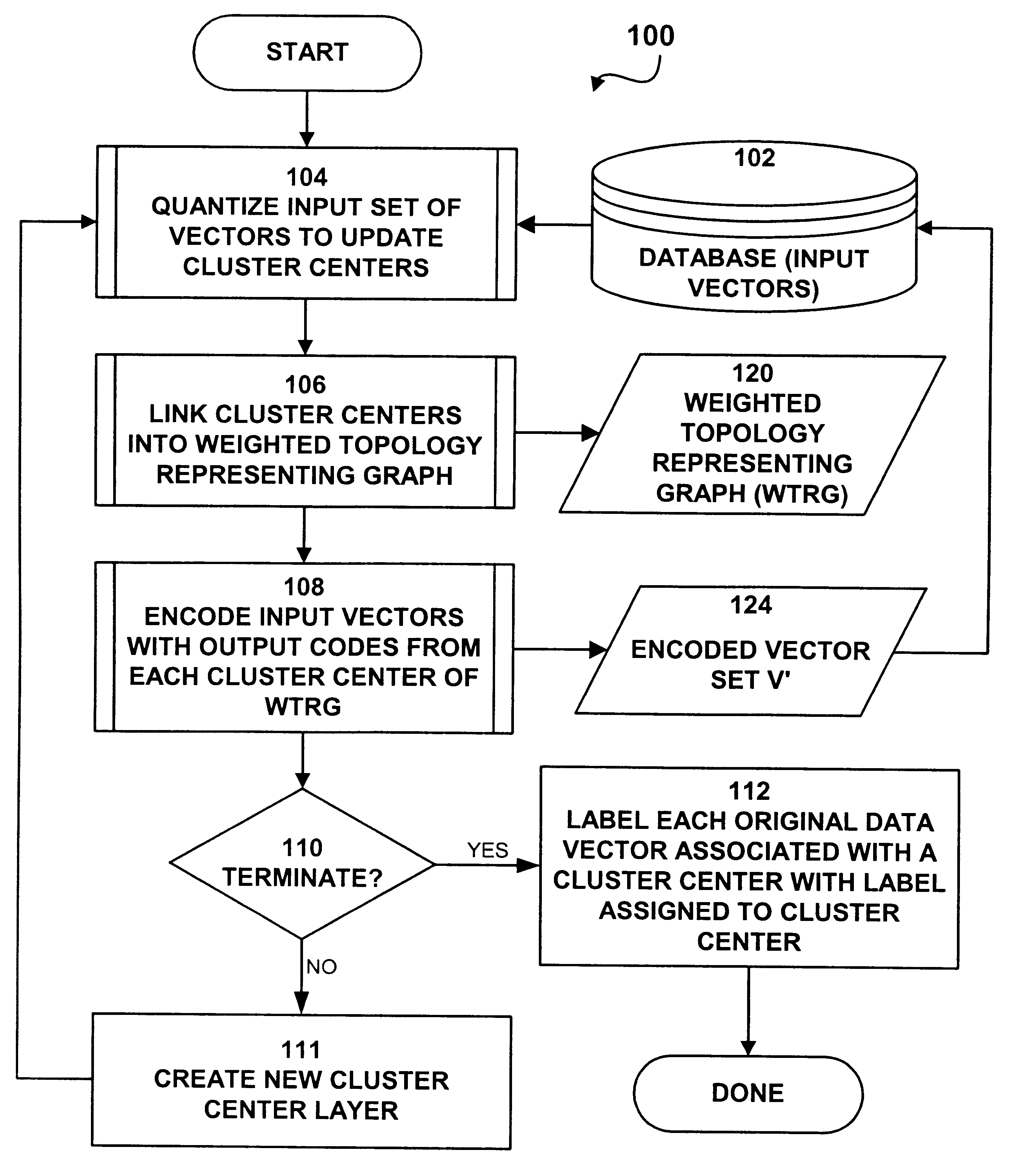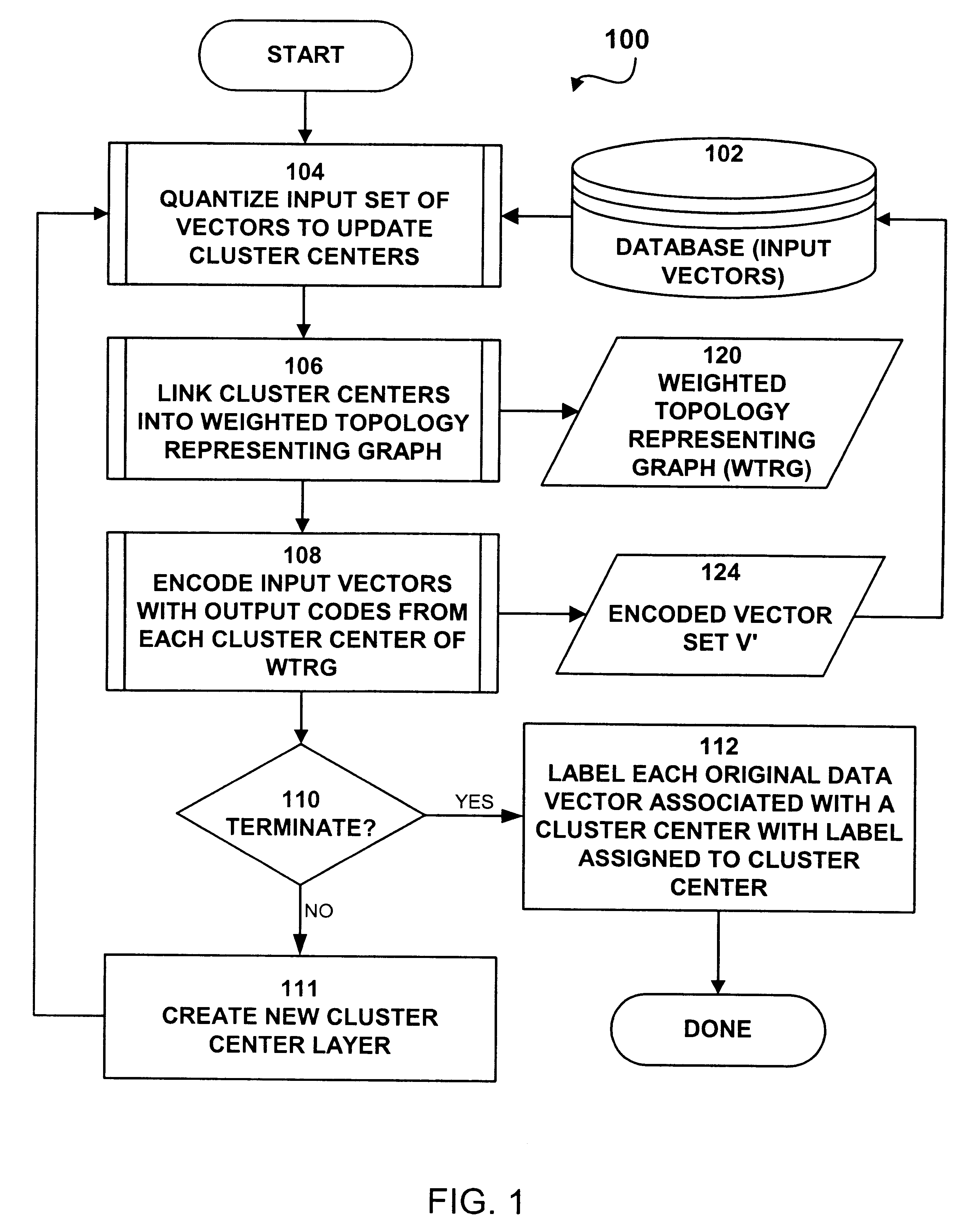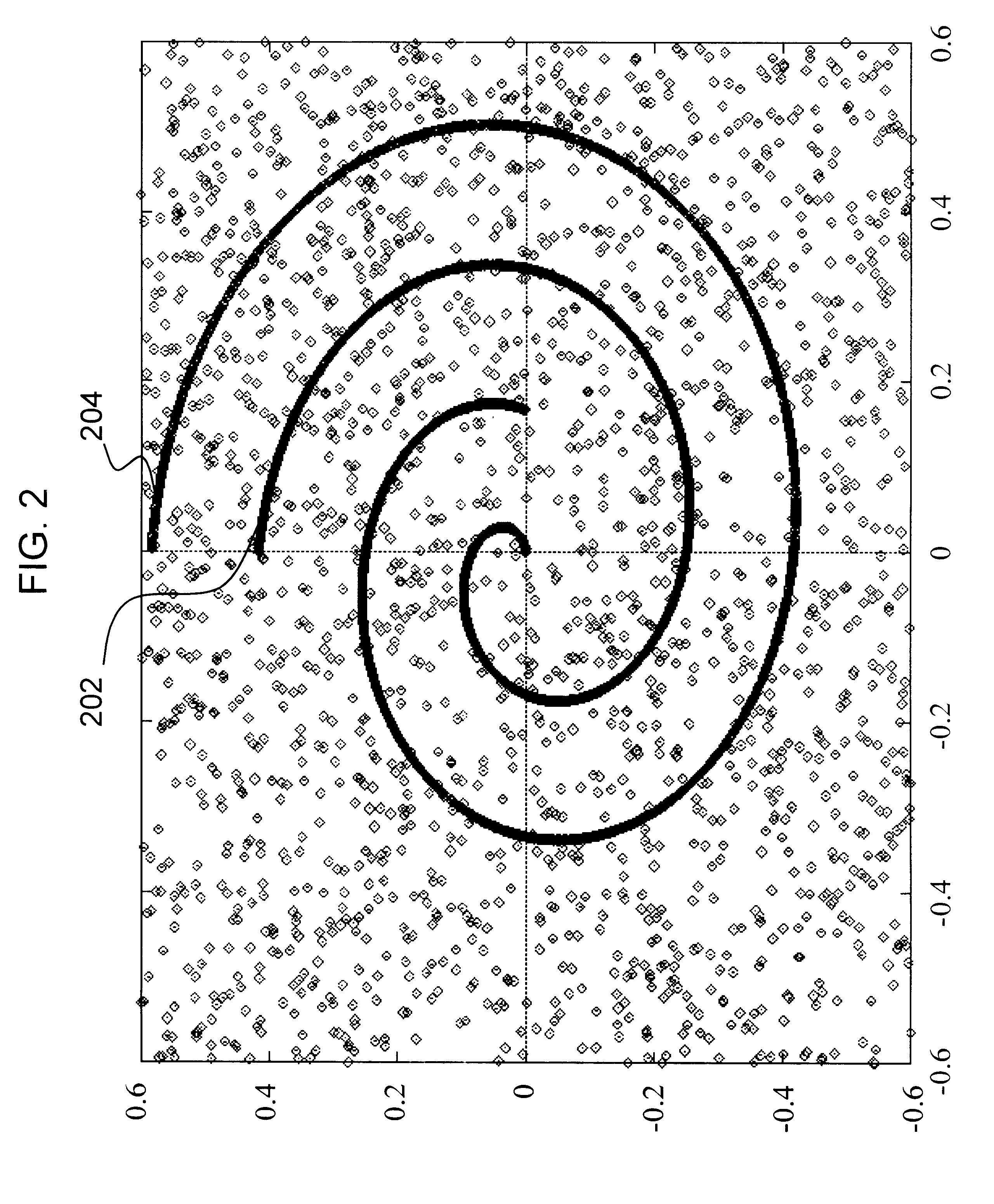Unsupervised identification of nonlinear data cluster in multidimensional data
a multi-dimensional data and clustering technology, applied in the field of data processing systems, can solve the problems of identifying, or separating, highly nonlinear subspaces of data, and classification methods may be either supervised or unsupervised, and may be surrounded by nois
- Summary
- Abstract
- Description
- Claims
- Application Information
AI Technical Summary
Problems solved by technology
Method used
Image
Examples
application embodiments
The present invention may be usefully applied to a number of different applications to identify clusters of data without supervision. These various embodiments are now described.
first embodiment
In a first preferred embodiment, system 1000 and process 100 are configured to identify clusters of fraudulent transactions in various types of transaction processing data. In this first embodiment, the database 102 stores account data for transacting entities, and historical transactions for each such entity. A transacting entity may be consumer, a merchant, a patient, a doctor or medical services provider, a point of sale device, a computer, or any other entity which generates transactions for the purchase, sale, reimbursement, collection, or distribution of monies, good, or services. The transaction data items which are the data items being classified depends on the type of transacting entity.
Where the transacting entity is a consumer with a credit card account, the transaction data items are individual credit transactions. One useful set of variables for credit card transaction data items includes:
Expiration date for the credit card;
Dollar amount spent in each SIC (Standard Indu...
PUM
 Login to View More
Login to View More Abstract
Description
Claims
Application Information
 Login to View More
Login to View More - R&D
- Intellectual Property
- Life Sciences
- Materials
- Tech Scout
- Unparalleled Data Quality
- Higher Quality Content
- 60% Fewer Hallucinations
Browse by: Latest US Patents, China's latest patents, Technical Efficacy Thesaurus, Application Domain, Technology Topic, Popular Technical Reports.
© 2025 PatSnap. All rights reserved.Legal|Privacy policy|Modern Slavery Act Transparency Statement|Sitemap|About US| Contact US: help@patsnap.com



